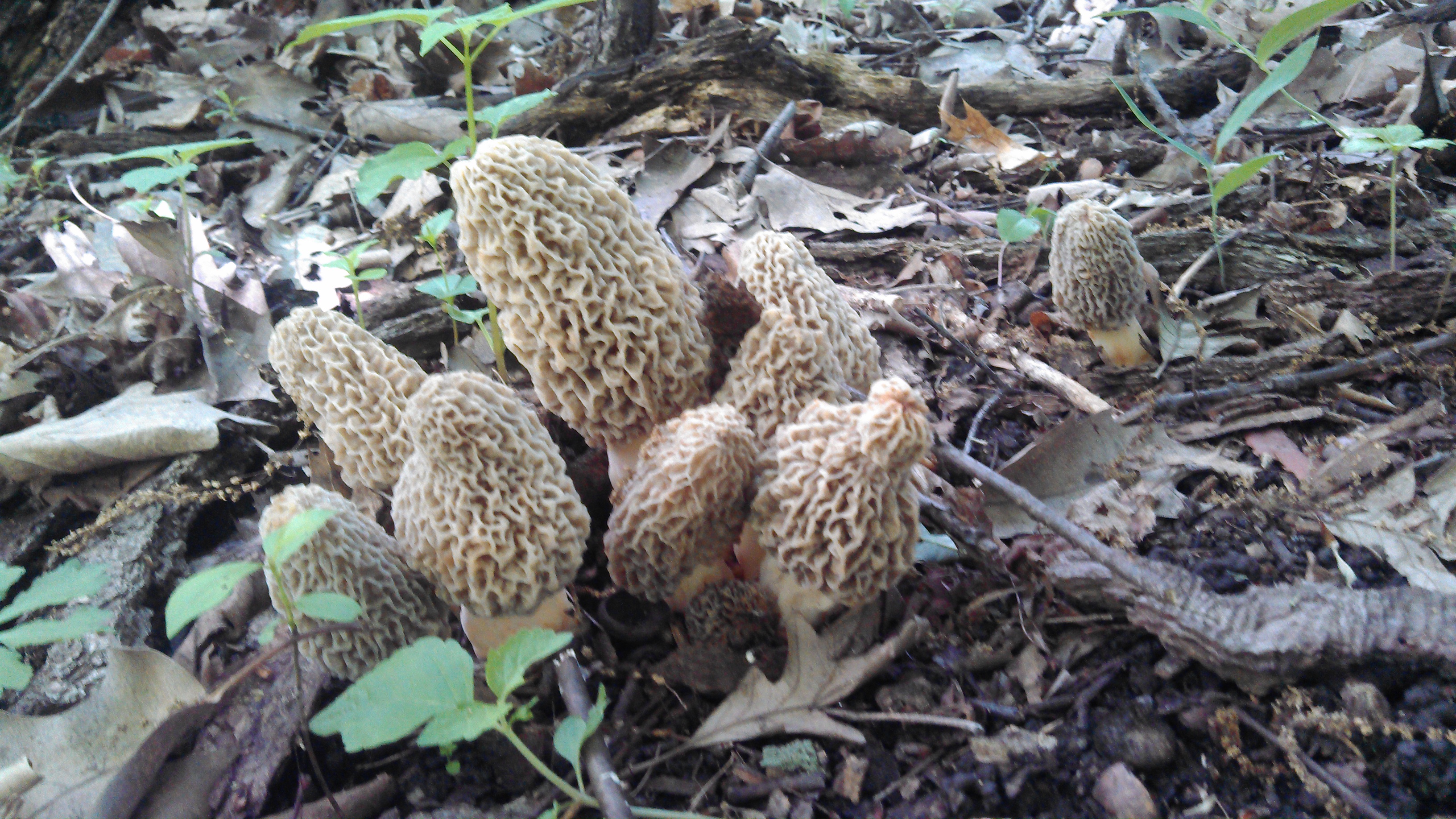Adaptation
Morchella esculenta is unlike most organisms when it comes to adapting to its environment. It is found that on the ascocarp of the morel there is variation in spore strain (Volk & Leonard 1989; Gessner et al. 1987). These variations are generated through a build up of genetic mutations and, if successful, reproduce. What makes this adaptation so odd in nature is that it is phenotypic, rather than genotypic (Volk & Leonard 1989). This means that there is evidence that the environment plays a role in order to cause morels to vary in appearance.
Another unusual
characteristic of M. esculenta is that when it is hunted,
picked and in the process of drying, the tissue shrinks and the
mushroom dehydrates. During this process, the force of the tissue
morphing propels spores from the ascus on the morel (Gessner et al.
1987; Wartinbee 2009). To cope with this, morels form different
thicknesses of tissues, resulting in different colored caps and
morphological variation. This is a technique used to maintain a form
of homeostasis during particularly dry or wet years. This shows that
the differences are indeed phenotypic, because one tissue type would
win out over the other if the differences were genotypic.
The main way that morels respond to environmental stimuli is through the triggering of the decomposition process. M. esculenta grow where another organism has died, or where there has been a fire recently (Wartinbee 2009). Also, as discussed above, morels will adapt their phenotypes based on the environment they inhabit. Since morels are a fungus, they do not move as readily as animals; therefore, they can not act against predators by moving or fighting back physically. Unfortunately since M. esculenta is used widely for culinary purposes, it has not created a chemical defense against predators either.
The structures of the morel relate to its environment in many ways. They are colored in a way so that they can blend in with forest floors in order to decompose organisms, but stay somewhat hidden from predators (Briggs 2010). The development of the fruiting body primordia is a pointed structure that is a sponge-like material. It is raised above the ground in order to release spores effectively (Wartinbee 2009). The long and skinny fruiting body allows for spores to be caught in air currents and be dispersed over larger distances (Volk and Leonard 1990). This allows for simpler repdroduction of M. esculenta and ultimately, for certain organisms to be decomposed.
To continue your journey, head to Reproduction next!
For more interesting websites on other organisms, visit MultipleOrganisms.net
